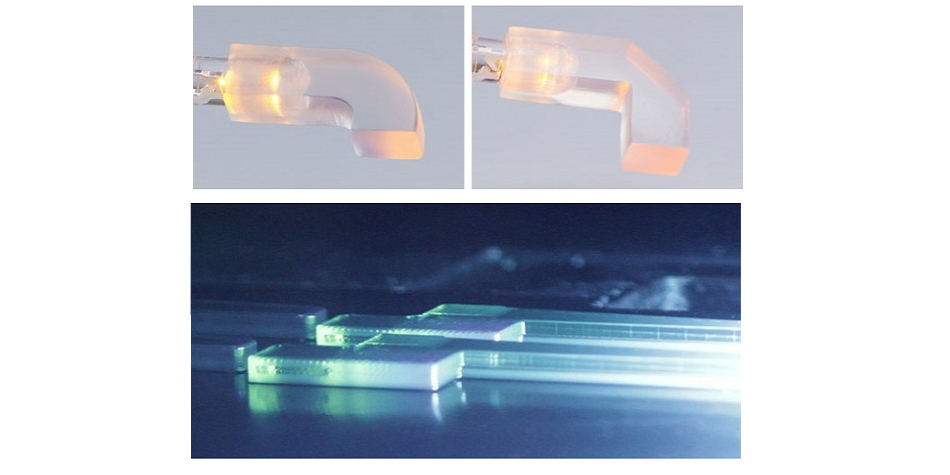
With the multitudes of complex parts required to build a computer, one may not think of the indicator light as one of the more difficult or complicated ones. They’re more challenging than you may think, however. The part must fit both the outer casing and the circuit board-mounted LED, and also needs to be shaped for optimal light performance. This may not sound difficult, but designers often must wait days or weeks for a milled part or a pattern
CADD Edge, a certified reseller of Stratasys 3D printing equipment, wanted to help. Using Stratasys’ Objet 260 Connex 3D printer and VeroClear material, they printed several light pipes, with varied designs, in 35 minutes, for a cost of only a few dollars. The company then tested two different designs of a common 90-degree light pipe. One of them, with a curved bend, performed much more poorly than the other, which featured a 45-degree bend that provided optimum reflection. Choosing the better part was simple–and the entire process, from CAD to the testing stage, took about two hours. In traditional prototyping, a designer might test the curved pipe and decide that its performance is mediocre. The options then are to use it anyway, even though it doesn’t emit nearly as much light as hoped, or to order another design and wait several days before being able to test it. And if that one doesn’t work…well, you can see how the time and money begin to add up.
“With such a fast turnaround, the designer could test and choose the best of multiple designs (we printed four iterations at once), then even revise and print the same day,” said Marcus Weddle of CADD Edge. “This rapid iteration cycle allows for more design ideas, and a much higher confidence in the design going forward to the next prototyping stage. As a bonus, the time for these additional iterations is still far shorter than the traditional method.”
What are your thoughts on the future of 3D printing and electronics? Let us know in the 3D Printing Electronics forum thread on 3DPB.com.
